When Does Bee Balm Bloom? What To Know
If you’re like me, there’s nothing more exciting than the moment your garden favorites bust out in full bloom.
And let’s be honest, few can hold a candle to the majestic bee balm when it comes to putting on a floral show.
But just like that friend who’s always fashionably late, bee balm keeps us guessing, “When’s the grand entrance gonna be?”
Well, wonder no more, cause I’ve got the insider’s scoop on when bee balm bursts onto the garden stage.
Let’s take a deep dive into the wonderful world of bee balm blooming.
We’re talking timelines, cues, and all the good stuff you need to know to predict when your bee balm will be strutting its stuff.
By the end, you’ll be a bona fide bee balm bloom whisperer.
Bee Balm Bloom Time
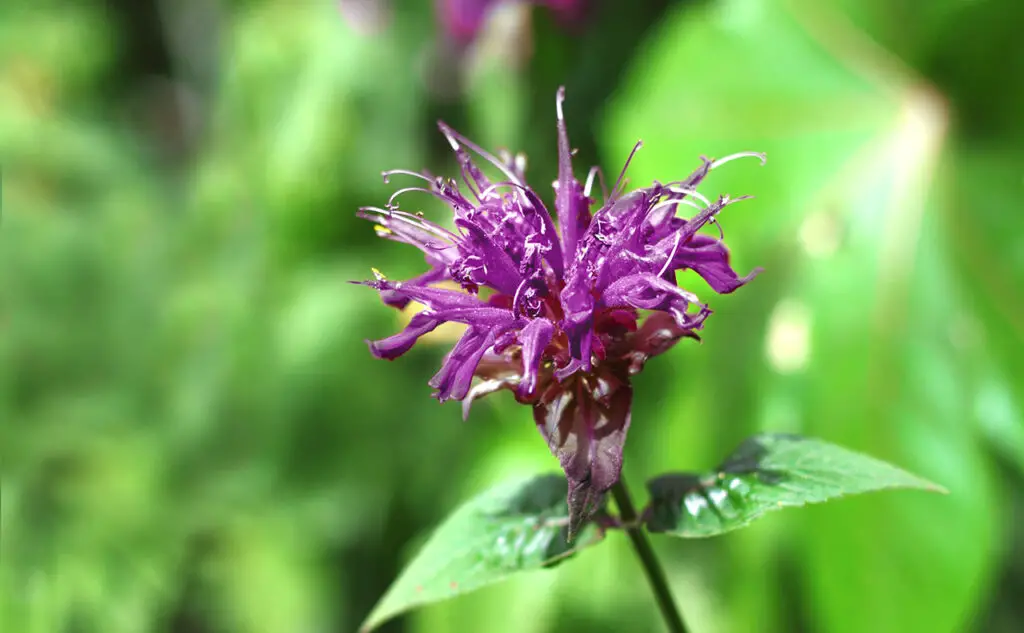
Bee balm is a popular perennial plant known for its stunning flowers, which are highly attractive to hummingbirds, bees, and butterflies.
Understanding the bloom time of bee balm is essential for maintaining its vitality and beauty in your garden.
Typically, bee balm begins to bloom in late spring and lasts throughout the summer months.
The specific timing does vary though depending on your region.
For example, in North Carolina, bee balm can start blooming from late May to mid-July.
In contrast, in Ohio or Michigan, the bloom time might extend from April to September.
After the initial bloom, bee balm will continue to showcase its flowers for approximately two months during the summer and fall seasons.
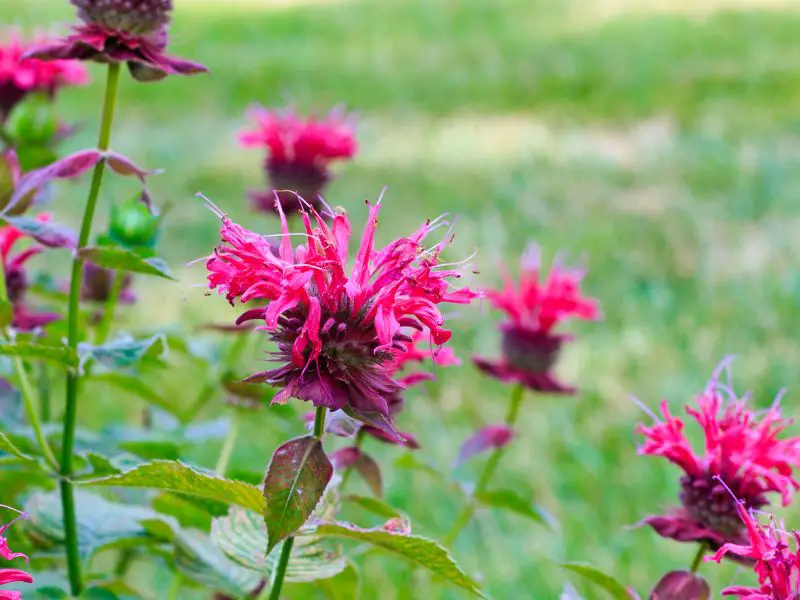
To ensure your bee balm plants thrive and achieve their full blooming potential, regular care is crucial.
Deadheading, or removing those spent flowers, actually encourages new growth and can extend the blooming period.
Make sure to deadhead your bee balm plants throughout their entire bloom time.
In addition, bee balm plants come in several varieties, each with slightly different bloom times.
For instance, the Lemon Bergamot variety produces flowers with a strong fragrance between the second half of summer and the beginning of fall.
This particular type can reach 30 inches in height and is often used in teas and potpourri.
By planting different varieties of bee balm and providing proper care, you can create a stunning garden display with an extended, staggered bloom time.
Remember that bee balm flowers not only add visual appeal but also benefit the surrounding ecosystem by attracting essential pollinators.
How Many Years Does It Take for Bee Balm to Bloom?
Bee balm (Monarda), that star of the summer garden, is a perennial.
This means once planted, it’ll come back year after year.
But when does it start showing off those glorious blooms that have you and the pollinators all aflutter?
Well, you’re in for a treat, ’cause bee balm is a bit of a speedster when it comes to strutting its stuff.
Typically, bee balm plants will bloom in their first year, especially if you plant them in the spring.
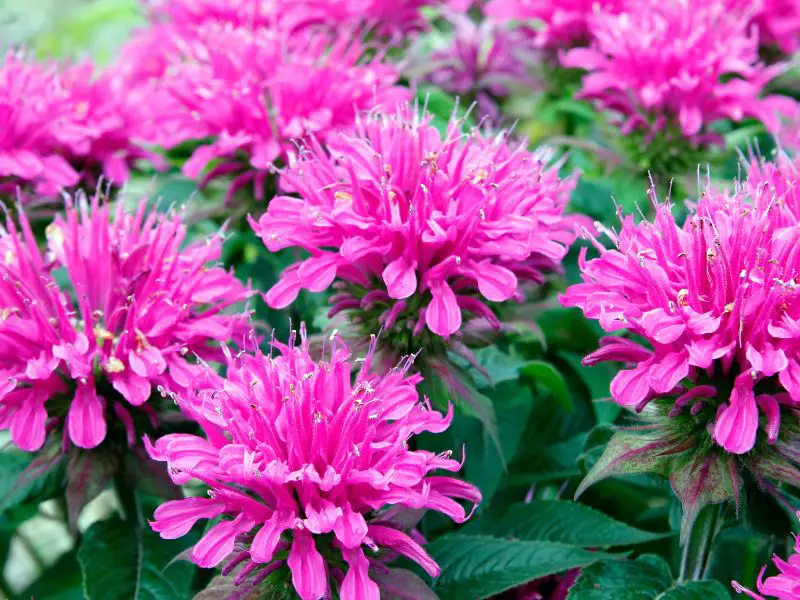
That’s right, folks – you won’t have to wait years to see those radiant red, pink, or purple flowers.
Just plant your bee balm in a sunny spot with well-draining soil, give it a bit of TLC, and by mid to late summer, you’ll be rewarded with a dazzling display.
Now, keep in mind, the first year’s bloom might not be as prolific as in subsequent years.
Like any good performer, bee balm likes to warm up before it really gets going.
As the plant matures and establishes itself, you’ll see an increase in the number and size of the blooms.
By year two, your bee balm should be in full swing, setting your garden alight with color and buzzing with all sorts of pollinators.
Growing Requirements
Sun Exposure
Bee balm thrives in full sun but can tolerate partial shade.
It’s important to provide your bee balm with at least 6 hours of sunlight every day to ensure healthy growth and blooming.
A lack of sunlight could reduce blooming or prevent it altogether.
Soil Type
Bee balm can seem a bit fussy cause it prefers well-draining soil that is rich in organic matter.
Aim for a soil pH that scores between 6.0 and 6.7, which promotes optimal growth.
You can improve your soil by incorporating compost, aged manure, or leaf mulch to increase the soil’s organic content.
Watering Needs
Keep the soil evenly moist while your bee balm plant establishes itself during the growing season.
After it’s established, maintain a consistent watering schedule, ensuring that the soil doesn’t dry out completely but also avoids becoming waterlogged.
Mulching around the base of the plant can help retain soil moisture.
Fertilizing Needs
Regular additions of organic matter or compost can provide adequate nutrients for your bee balm, but you may also apply a balanced fertilizer if desired.
Choose a fertilizer with an equal ratio of nitrogen, phosphorus, and potassium (e.g., 10-10-10) and follow the package instructions for best results.
Planting and Propagation
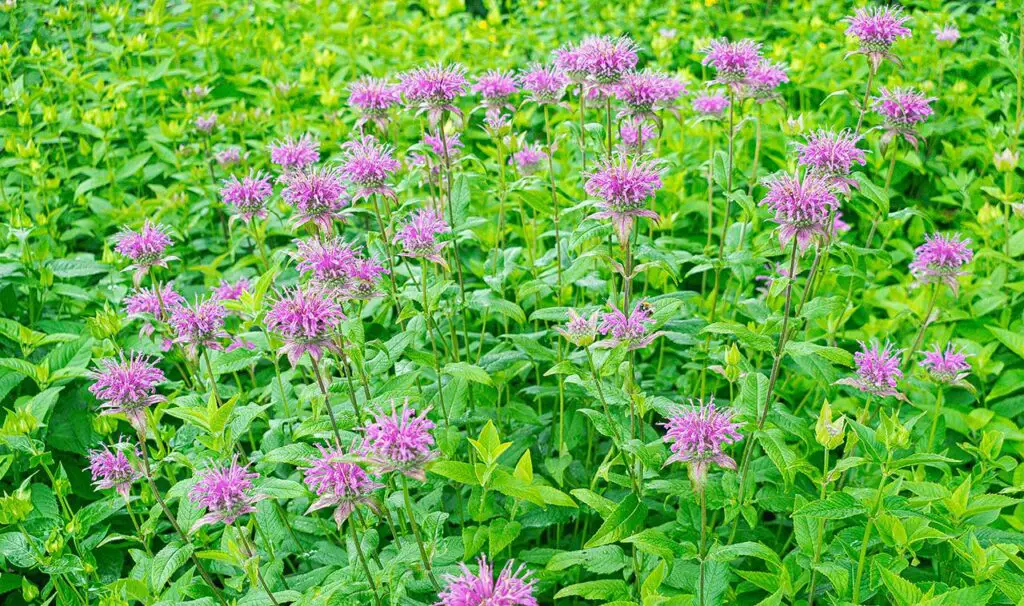
Planting Times
To ensure your bee balm attracts pollinators like bees, hummingbirds, and birds, it is important to plant it at the right time.
Bee balm plants can be planted in the spring or fall.
If you’re planting in the fall, make sure to trim the bee balm down to a couple of inches in height to encourage better root development for winter survival.
If starting bee balm plants from seeds, sow them indoors around eight weeks before the last frost.
Planting Techniques
When planting your bee balm, follow these steps to ensure a successful growing experience:
- Location: Select a location in your garden with well-draining soil that receives full sun to partial shade. Bee balm thrives in USDA hardiness zones 4-9.
- Spacing: Plant container-grown bee balm about 18 to 24 inches apart to provide ample space for growth and air circulation, reducing the chance of disease.
- Soil: Prepare the soil by incorporating organic matter, such as compost or well-rotted manure, to improve its fertility and drainage.
- Planting: Dig a hole slightly larger than the root ball of your bee balm plant, place the plant in it, and backfill with soil. If planting seeds, follow the recommended seed packet guidelines.
- Watering: Keep the soil evenly moist, but not wet, while the plant establishes itself. This is especially important during the growing season.
Propagation Techniques
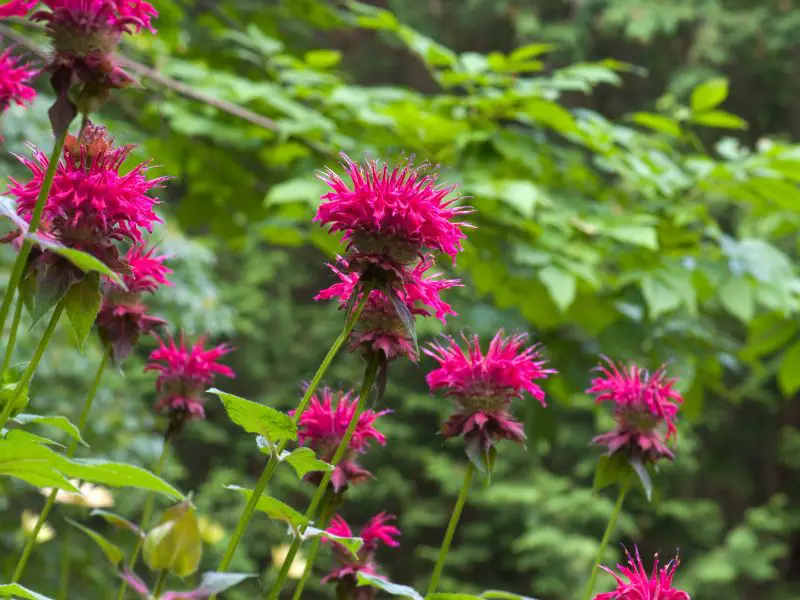
- Division: The easiest way to propagate bee balm is via division, which involves digging up and transplanting the roots and rhizomes. This can be done in the spring or fall.
- Stem cuttings: Take stem cuttings from healthy plants and root them before transplanting them into your garden.
- Seeds: As mentioned earlier, you can also propagate bee balm from seeds by sowing them indoors 8 weeks before the last frost.
By following these planting and propagation guidelines, you’ll have a flourishing bee balm garden that invites pollinators to visit and brightens your outdoor space.
Bee Balm Varieties
Bee Balm, also known as Monarda or Bergamot, is a beautiful, fragrant perennial plant belonging to the mint family, Lamiaceae.
There are several varieties within the Monarda species that you can grow in your garden, offering a range of colors and characteristics.
We’ll discuss four popular varieties: Monarda Didyma, Monarda Fistulosa, Lemon Bee Balm, and Raspberry Wine.
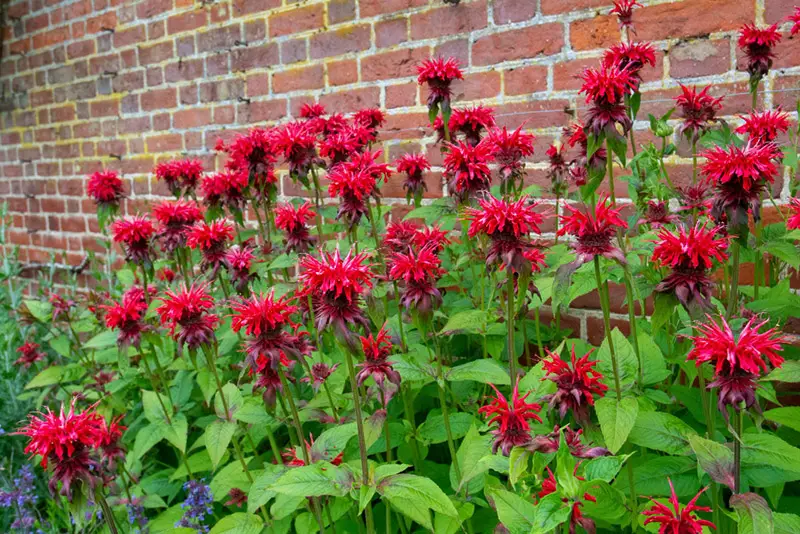
Monarda Didyma
Monarda Didyma, commonly known as Scarlet Bee Balm or Red Bergamot, is the most famous variety with its stunning red flowers.
This variety prefers a sunny location with well-drained soil and is an excellent choice for attracting hummingbirds, bees, and butterflies.
The Monarda Didyma is known to bloom from mid to late summer.
Typical colors for Monarda Didyma include:
- Red: The most common and eye-catching hue.
- Pink: A softer, more understated option.
Monarda Fistulosa
Also known as Wild Bergamot or Lavender Bergamot, Monarda Fistulosa is another popular variety in the Bee Balm family.
It can grow in various conditions and is adaptable to different soil types.
The flowers bloom in shades of lavender, pink, and white, creating an appealing and delicate addition to your garden.
Expect Monarda Fistulosa to bloom from early to mid-summer.
Colors for Monarda Fistulosa:
- Lavender: The most typical color, ranging from light to deep shades.
- Pink: A subtle and charming hue.
- White: Gives a clean and elegant look to your garden.
Lemon Bee Balm
The Lemon Bee Balm (Monarda citriodora) is named for its distinctive citrus scent.
This variety is an excellent addition to your garden not just for its fragrance but also for attracting pollinators.
The Lemon Bee Balm blooms in white, purple, or a combination of both colors during late spring and summer.
Colors for Lemon Bee Balm:
- Purple: Adds a touch of royalty to your garden.
- White: Brings a clean and fresh look.
Raspberry Wine
The Raspberry Wine Bee Balm (Monarda ‘Raspberry Wine’) is known for its deep wine-red flowers, which create a striking contrast against the dark green foliage.
This variety is resistant to powdery mildew and blooms from mid-summer to early fall.
Raspberry Wine is easy to grow and perfect for attracting pollinators like hummingbirds and butterflies.
Raspberry Wine blooms primarily in a deep wine-red color, making it unique and captivating when compared to other Bee Balm varieties.
No matter which variety you choose, your garden will benefit from the beautiful flowers and the valuable pollinators that Bee Balm attracts.
Enjoy the vibrant colors and lovely fragrances of these Bee Balm varieties as they bloom throughout the year.
Caring for Bee Balm
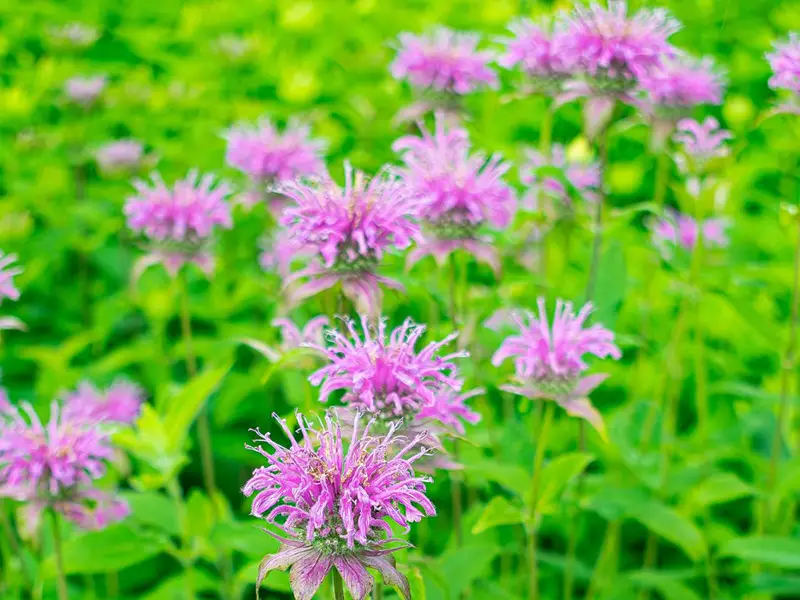
Pruning
Prune your bee balm regularly to promote a healthy and lush plant.
In the spring, trim any dead or damaged stems to encourage new growth.
Maintain a consistent height by cutting the stems back to a set of healthy leaves.
This will improve air circulation, reducing the risk of powdery mildew and other diseases.
Additionally, adequate spacing between plants (about 18-24 inches apart) helps provide good ventilation.
Deadheading
Deadheading, or removing spent flowers, encourages your bee balm to produce more blooms throughout the season.
Regularly check your plant and snip off faded flowers just below the flower head.
This not only keeps your plant looking tidy, but it also prevents self-seeding and directs the plant’s energy towards new flower growth.
Dividing
Every 2-3 years, divide your bee balm in the early spring or fall to keep it healthy and vigorous.
Gently dig up the clump, separating it into sections with a sharp spade or knife.
Replant the divisions in a well-prepared bed, ensuring that each new plant has adequate sun exposure and room to grow.
Preventing and Treating Diseases
Bee balm is susceptible to pests and diseases, such as powdery mildew and rust.
To prevent these issues:
- Ensure proper spacing and air circulation around your plants
- Water at the base of the plant rather than overhead, preferably in the morning to give it time to dry
- Avoid overcrowding and promote healthy growth with regular pruning and dividing
If you notice any signs of disease, promptly remove and discard the affected leaves or stems.
In severe cases, consider using a suitable fungicide to treat your plants, following the label instructions carefully.
Flower Characteristics
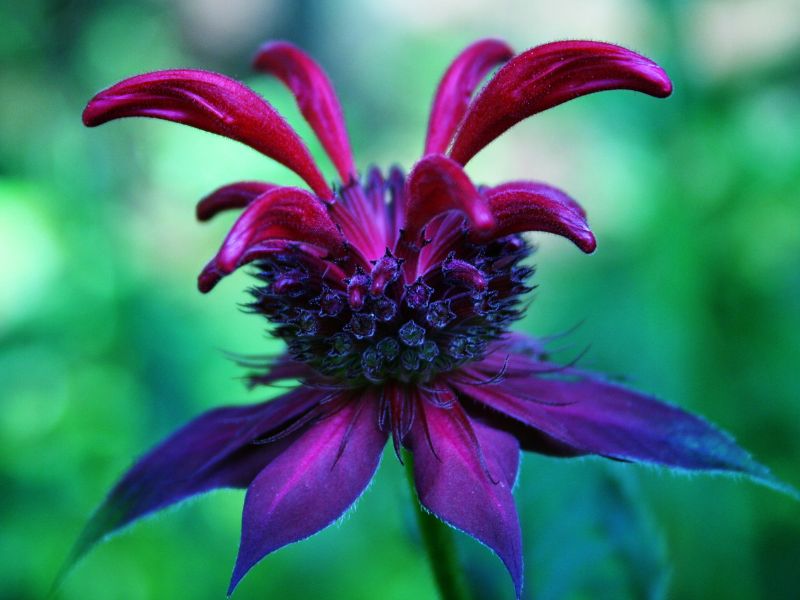
Color Varieties
Bee balm plants produce vibrant and eye-catching flowers that come in various colors.
You can find bee balm in shades of pink, purple, red, and white.
These colors not only add visual interest to your garden but also attract pollinators such as bees, butterflies, and hummingbirds, which are essential for a healthy ecosystem.
Tubular Flowers
The flowers of the bee balm plant are characterized by their unique tubular petals, which form fascinating flower heads.
These tubular petals contain nectar, a favorite of hummingbirds and bees.
As the flowers bloom from mid-summer to early fall, they not only draw in pollinators but also provide a lovely fragrance that can be enjoyed in your garden.
The leaves of the bee balm plant are also noteworthy, as they’re fragrant and can be used in teas or potpourri.
Overall, bee balm plants are a practical and beautiful addition to any garden, thanks to their striking colors, tubular flowers, and appealing scent.
Wild Bergamot
Wild Bergamot, known by its botanical name Monarda fistulosa, is a perennial flowering herb native to North America.
This plant, also referred to as Bee Balm or Eastern Bergamot, belongs to the mint family and is treasured for its gray-green foliage and striking tubular flowers.
The vibrant blooms typically appear in mid to late summer, lasting for about a month and attracting a diverse range of pollinators, including bees, butterflies, and hummingbirds.
To grow your own Wild Bergamot, it’s important to provide a well-draining soil that closely mimics its natural habitat – dryish soils on prairies, dry rocky woods, and glade margins.
This perennial can reach heights of 2-4 feet and thrives in full sun or light shade.
Since it’s part of the mint family, you can expect a sweet, minty aroma emanating from your Wild Bergamot plants, making them a delightful addition to your garden.
Aside from the beauty and pleasant fragrance it brings, Wild Bergamot also offers several benefits.
Native Americans have traditionally used this plant for its medicinal properties, including remedies for respiratory ailments, digestive issues, and skin infections.
Plus, its ability to attract pollinators makes it ideal for supporting local ecosystems and enhancing the biodiversity in your yard.
Caring for Wild Bergamot involves pruning to promote healthy growth and to encourage more flowering.
Regular removal of spent flowers as they wilt and fade can stimulate the plant to rebloom.
Just make sure to cut each stem back to its base in the crown of the plant, and compost or discard the removed stems, maintaining your garden’s aesthetics.

